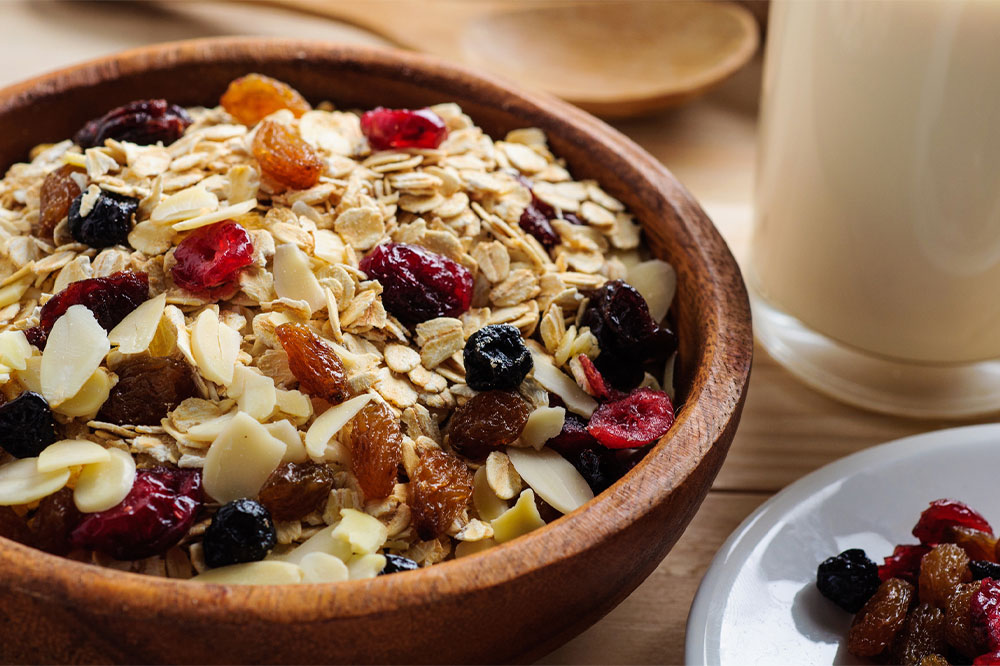
7 foods to eat for a healthy heart
Heart disease is one of the most leading health concerns in the country. Moreover, research suggests that food plays a crucial role in heart health and can impact the risk for heart-related problems. Fortunately, many common foods and some exotic ones are packed with nutrients that can boost heart health and lower the risk for various heart problems. So, include these superfoods in daily meals to make your heart healthier.
Oats
Oats are a type of whole grain that is full of soluble fiber, which not only boosts digestive health but also prevents the body from absorbing cholesterol, thus reducing the risk for heart attacks and strokes. When selecting oats, it’s best to prefer steel-cut oats, as they contain no sodium, sugar, and preservatives. Plus, they take longer to digest and are less likely to cause spikes in blood sugar.
Fatty fish
Fatty fish are well-known superfoods for heart health. They are among the richest sources of omega-3 fatty acids, which are a type of healthy fats that can help control high blood pressure and irregular heartbeats. They can also reduce the risk for stroke and heart failure. Some fatty fish known to be heart-healthy include salmon, lake trout, sardines, anchovies, and herring. Experts recommend eating at least two servings of fatty fish every week.
Chia seeds
Chia seeds are an excellent alternative for those who don’t eat fish. The level of omega-3 fatty acids in chia seeds is impressively higher than most plant-based foods. Moreover, these tiny seeds are packed with heart-healthy antioxidants, soluble fiber, proteins, and minerals such as iron, magnesium, and calcium. Chia seeds help reduce the risk of abnormal heart rhythms as well as lower triglyceride levels, which are a type of fat present in blood linked to an increased risk for heart disease.
Dark chocolate
It has been observed that dark chocolate can be great for heart health. Being rich in flavonoids, it helps improve blood circulation and reduce inflammation. Dark chocolates that contain at least 60 to 70 percent cocoa have also been associated with reduced risk for heart attacks and strokes. However, it is important to eat dark chocolate in moderation as it is packed with calories.
Berries
Blueberries, strawberries, raspberries, acai berries, and other berries are loaded with flavonoids that can help reduce blood pressure and protect blood vessels. Blueberries and strawberries, in particular, contain high amounts of a compound that can help widen blood vessels, supplying blood straight to the heart and also prevent plaque build-up inside them. Experts recommend including different types of berries in one’s meals at least three times per week to reduce the risk of developing heart conditions.
Beans
Black, white, navy, kidney, garbanzo, and pinto beans are among the richest sources of plant-based protein. They also contain high levels of minerals, soluble fibers, and phytonutrients that can lower bad cholesterol levels and reduce blood pressure, making them superfoods for a healthy heart. Beans are inexpensive, easy to cook, and versatile as they can be added to soups, salads, and casseroles.
Dark leafy greens
Dark leafy greens like kale, spinach, and collard greens are all packed with a wide variety of nutrients, vitamins, and minerals that are not only good for your heart but also overall health. They contain vitamin K and folate, which can protect arteries, prevent heart diseases, and ensure proper blood clotting. Moreover, being high in nitrates, leafy greens can help reduce arterial stiffness, thus lowering blood pressure.
While foods can help provide symptomatic relief and decrease the risk of suffering from heart conditions, it is important to be aware of certain heart diseases that have genetic roots. HOCM or Hypertrophic Obstructive Cardiomyopathy is one such condition. It is a genetic disorder caused due to thickening of myocardium, which is type of cardiac tissue that enables heart to pump blood around the body. This heart disease can be fatal as it can lead to life-threatening arrhythmias (irregular heartbeat) and mitral regurgitation or partial closing of mitral valve, which leads to insufficient blood supply.
Diagnosing HOCM
2D-echocardiography is typically considered as the primary technique to diagnose HOCM. The condition can also be diagnosed using genetic tests to assess genes that may cause cardiomyopathy. This genetic test is done by analyzing blood samples. Apart from this, several imaging tests such as chest X-ray and MRI (magnetic resonance imaging) can help determine if there is thickening of left ventricle. Patients with HOCM typically exhibit a distinct murmur in their heart. The mummering sound can be heard using digital stethoscopes.
Treating HOCM
People with HOCM whose interventricular septal thickness is more than 30mm or have “burnt out” left ventricle are treated using Implantable Cardioverter Defibrillator (ICD). HOCM can also be treated through mechanical therapy using surgical myomectomy, which is aimed to surgically reduce thickness of the interventricular septum.
Apart from these, there are some other treatment options used for managing HOCM symptoms. Mavacamten is one such treatment method that has superior benefits as compared to other placebo-based options. Mavacamten is FDA approved and is a type of cardiac myosin inhibitor that reduces cardiac muscle contractility. Camzyos™ (mavacamten) is available in the form of capsules and has a typical dosing of 5mg once daily with or without food. Some doctors may also recommend titration or lowering of dosage based on the symptoms exhibited by the HOCM patient.